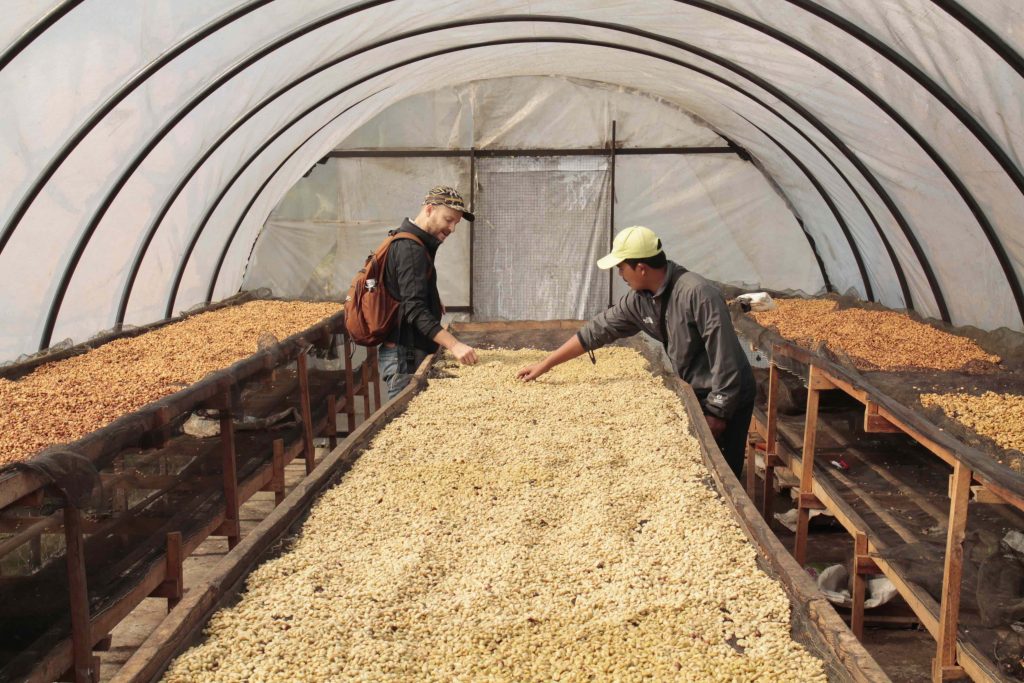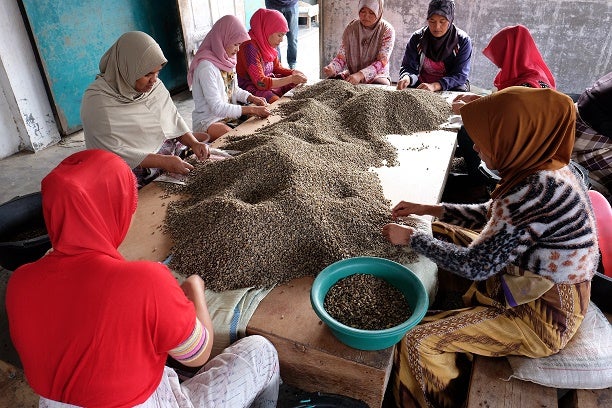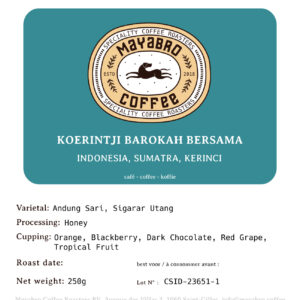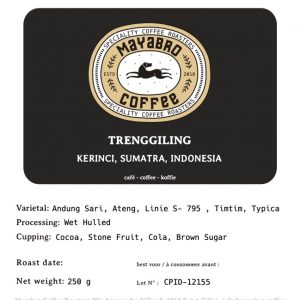Sumatran coffees have long been distinct for their earthy, savory, somewhat vegetal or herbaceous characteristics, in part contributed by the climate and the mix of varieties grown, but also due to a specific post-harvest processing style called Wet-Hulling, or locally known as Giling Basah, which imparts much of the unique qualities these coffees have.
Before the 1970s, coffees in Sumatra were processed in the two most commonly found methods worldwide: washed and natural. In the 1970s, Japanese interest in Sumatran coffees led to the introduction of the Wet-Hulled process, a unique style of handling and drying that is largely responsible for Sumatran coffees’ unmistakable flavor characteristics, but also their normally greenish-blue hue.
In Sumatra, coffee farmers will typically harvest their coffee cherry and depulp them by hand at their farm or home. The coffee then dries for a very short time and is brought either to a coffee marketplace or to a “collector,” or collection point, where the beans are purchased at anywhere from 30–50% moisture, with their mucilage still partially intact. The coffee is then combined and hulled (has its parchment removed) while it is still in this high-moisture state. The coffee is then dried to the more commonly globally accepted 11–13% moisture in order to prepare for export.
While there is some experimentation currently being done with large-scale Washed coffee for export, most of the Washed coffee produced is for local consumption. The Wet-Hulled process was developed specifically to speed up drying and efficiency in a climate that sees heavy rain and clouds most of the year. Removing the parchment layer allows the coffee to dry much faster on patios or tarps even in these conditions.



-
 Koerintji Barokah Bersama Honey€14,00 – €27,40
Koerintji Barokah Bersama Honey€14,00 – €27,40 -
 Trenggiling Wet Hulled, Espresso€12,20 – €23,60
Trenggiling Wet Hulled, Espresso€12,20 – €23,60